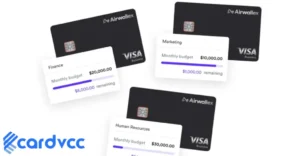Charging credit card fees to customers means passing on the cost of processing credit card payments to them. This practice can impact customer satisfaction and loyalty.

Charging credit card fees to customers has become a topic of debate among businesses and consumers. Some businesses pass these fees to customers to offset processing costs. While this can help businesses save money, it may deter some customers. Transparency about these fees is crucial to maintaining trust.
Understanding the legal aspects and customer sentiment is essential before implementing such charges. Businesses must weigh the potential savings against the risk of losing customers. Finding a balance can help maintain profitability without compromising customer satisfaction.
Legal Considerations
Charging credit card fees to customers involves several legal considerations. Businesses must follow regulations to avoid penalties.
Regulations And Compliance
Businesses must comply with laws when charging credit card fees. Here are some key regulations:
- Federal Law: The Dodd-Frank Act allows businesses to charge a credit card fee.
- State Law: Some states have additional rules on credit card fees.
- Credit Card Company Rules: Companies like Visa and MasterCard have specific rules.
Businesses must inform customers about the fee before a transaction. They must display the fee clearly at the point of sale. Transparency helps in building customer trust.
Jurisdictional Differences
Different states have different laws regarding credit card fees. Here’s a quick look:
| State | Allowed? | Notes |
|---|---|---|
| California | No | Businesses cannot charge extra for card payments. |
| New York | Yes | Disclosure of fees is mandatory. |
| Texas | No | Credit card surcharges are prohibited. |
| Florida | Yes | Must inform customers about the fee. |
Businesses should check local laws before charging credit card fees. Consulting a legal expert can help ensure compliance.
Types Of Credit Card Fees
Charging credit card fees can vary. Each type of fee has unique rules and applications. Understanding these can help businesses and customers manage costs better.
Surcharge Fees
Surcharge fees are added to the total purchase price. Businesses use these to cover the cost of credit card transactions. These fees are usually a percentage of the transaction amount.
Not all states allow surcharge fees. Businesses must inform customers about the surcharge before processing the transaction. The fee must be displayed at the point of sale.
| State | Allows Surcharge |
|---|---|
| California | No |
| Texas | Yes |
| Florida | Yes |
Convenience Fees
Convenience fees are charged for providing an alternative payment method. For example, paying online instead of in person. These fees are usually a flat rate.
Unlike surcharge fees, convenience fees are not a percentage of the transaction. They are fixed amounts set by the business. Customers must know about the fee before paying.
- Allowed for specific payment channels
- Must be disclosed
- Cannot be charged for in-person payments
Both surcharge and convenience fees help cover transaction costs. Knowing the differences ensures transparency and fairness in transactions.
Impact On Customers
Charging credit card fees to customers can significantly affect their experience. This section explores how these fees impact customer perception and retention.
Customer Perception
Customers often feel negative about extra charges. They see credit card fees as unfair. This perception can damage your brand image. Transparency is key here. Make sure customers know about these fees upfront. Hidden fees lead to a loss of trust.
Customer Retention
Extra fees can drive customers away. Many customers prefer businesses with no extra charges. They may switch to competitors. Offering incentives helps balance the impact. For example, provide discounts for alternative payment methods.
Here’s a quick comparison:
| Payment Method | Customer Preference |
|---|---|
| Credit Card (with fees) | Low |
| Debit Card (no fees) | High |
Focus on customer retention strategies. Offer loyalty programs or special deals. This will help keep your customers happy and loyal.
Business Benefits
Charging credit card fees to customers can provide significant business benefits. Understanding these benefits helps businesses make informed decisions. Below, we explore two major advantages.
Revenue Increase
One of the most compelling benefits is the potential for revenue increase. By passing on credit card fees, businesses can boost their income. This can lead to a healthier bottom line.
Many businesses lose money to credit card fees. Passing these fees to customers can offset that loss.
Cost Recovery
Another key benefit is cost recovery. Credit card transactions come with processing fees. These fees can add up quickly.
By charging customers for these fees, businesses can recover costs. This helps maintain profitability. It also allows for better budgeting and financial planning.
Here is a simple breakdown:
| Benefit | Details |
|---|---|
| Revenue Increase | Boosts income by passing fees to customers |
| Cost Recovery | Recovers processing fees, aiding profitability |
- Increases overall revenue
- Balances processing costs
- Helps maintain financial health
In summary, charging credit card fees to customers offers clear benefits. It can increase revenue and help recover costs effectively.
Implementing Fees
Charging credit card fees to customers can be tricky. It involves balancing business needs with customer satisfaction. Clear communication and best practices are essential. This section will cover strategies for implementing fees effectively.
Communication Strategies
Clear communication is crucial when implementing credit card fees. Customers should know why the fees are necessary. Here are some strategies:
- Transparency: Clearly state the fee amount and why it’s being charged.
- Advance Notice: Inform customers about the fees before they occur.
- Explain Benefits: Highlight how the fees help in providing better services.
- Customer Support: Offer a support channel for any fee-related queries.
Best Practices
Following best practices ensures a smooth implementation. Consider these points:
| Best Practice | Description |
|---|---|
| Legal Compliance | Ensure your fees comply with local laws and regulations. |
| Fair Fee Structure | Set fees that are reasonable and justifiable. |
| Consistent Application | Apply the fees consistently across all customers. |
| Customer Feedback | Regularly collect and assess customer feedback on the fees. |
Implementing credit card fees requires careful planning. Proper communication and best practices make it easier. This ensures customer trust and business success.

Can Virtual Credit Cards Shield Against Online Fraud?
Online fraud is a growing concern in today’s digital world. Many people worry about their safety when shopping online. Virtual credit cards are a new tool to fight against fraud. But can they protect you? Let’s find out.
What Are Virtual Credit Cards?
Virtual credit cards are a type of digital payment method. They are linked to your real credit card but have different numbers. You can use them for online purchases just like a regular card.
How Do Virtual Credit Cards Work?
When you want to buy something online, you can generate a virtual card. This card has a unique number, expiration date, and security code. The details are different from your real credit card. You can use this virtual card for one purchase or a set period.
Benefits of Using Virtual Credit Cards
There are many benefits to using virtual credit cards. Here are some of the main advantages:
1. Enhanced Security
Virtual cards provide better security. If someone steals your virtual card number, they can’t use it for long. The card details can be set to expire after one use or a short time.
2. Privacy Protection
When you use a virtual card, your real credit card details stay hidden. This protects your personal information from getting into the wrong hands.
3. Spending Control
You can set spending limits on virtual cards. This helps you manage your budget better and prevents overspending.
4. Easy To Use
Creating a virtual credit card is simple. Many banks and financial services offer this feature. You can generate a card in minutes through their apps or websites.
How to Create a Virtual Credit Card
Creating a virtual credit card is easy. Follow these steps:
- Log in to your bank or financial service account.
- Navigate to the virtual card section.
- Click on “Create a Virtual Card.”
- Set the spending limit and expiration date.
- Generate the virtual card and use it for your purchase.
Case Study: Cardvcc
Cardvcc is a popular service that lets you create virtual credit cards. They offer instant card generation and many other features. Here are some highlights:
| Feature | Details |
|---|---|
| Instant Card Creation | Create a virtual card in seconds. |
| Spending Limits | Set custom spending limits for each card. |
| Expiration Dates | Choose how long the card is valid. |
| Wide Acceptance | Use the card at most online retailers. |
Cardvcc makes it easy to stay safe while shopping online. You can visit their website, cardvcc.com, to learn more.
Common Questions About Virtual Credit Cards
1. Are Virtual Credit Cards Free?
Some banks and services offer virtual cards for free. Others may charge a small fee. Always check with your provider.
2. Can I Use Virtual Cards Everywhere?
Most online retailers accept virtual cards. However, some may not. Always check the payment options before making a purchase.
3. Do Virtual Cards Affect My Credit Score?
No, using a virtual card does not affect your credit score. They are linked to your existing credit card account.
Virtual credit cards are a great tool to protect against online fraud. They offer enhanced security, privacy protection, and spending control. Creating a virtual card is easy and fast. Services like Cardvcc make it even simpler. Next time you shop online, consider using a virtual credit card. It could save you from fraud and give you peace of mind.
Get Started with Cardvcc
Ready to try virtual credit cards? Visit cardvcc.com and create your first card today. Stay safe and enjoy secure online shopping.
Alternatives To Charging Fees
Charging credit card fees can deter customers. Consider these alternatives to keep them happy and your business thriving.
Discounts For Cash Payments
Offer discounts for cash payments to encourage customers to use cash. This saves you from credit card processing fees.
- Advertise the cash discount.
- Display signs at the checkout counter.
- Include the discount on your receipts.
Example: If an item costs $100, offer a 5% discount for cash. The customer pays only $95.
Loyalty Programs
Loyalty programs reward customers for their repeated business. This can be an effective alternative to charging fees.
| Type | Description |
|---|---|
| Points System | Customers earn points with each purchase. Redeem points for discounts. |
| Tiered Rewards | Offer better rewards as customers spend more. |
| Membership Programs | Charge an upfront fee for exclusive benefits and discounts. |
Encourage customer loyalty and increase sales with these programs.
Case Studies
Charging credit card fees to customers can be a complex decision. Businesses have different experiences and outcomes. Here, we explore case studies that show real-world examples. These examples highlight the successes and lessons learned.
Successful Implementations
Many businesses have successfully implemented credit card fees. These examples show positive outcomes:
| Business | Industry | Outcome |
|---|---|---|
| Local Coffee Shop | Retail | Increased profit margins by 5% |
| Freelance Designer | Services | Reduced transaction costs by 3% |
| Online Retailer | E-commerce | Improved cash flow |
The Local Coffee Shop added a small fee for credit card payments. This change increased their profit margins by 5%. Customers understood the reason for the fee.
A Freelance Designer started charging a 2% fee for credit card payments. This reduced transaction costs by 3%. The designer communicated clearly with clients about the fee.
An Online Retailer implemented a credit card fee on orders. They saw an improvement in cash flow. Many customers opted for alternative payment methods.
Lessons Learned
These businesses also faced challenges. Here are some lessons learned:
- Clear Communication: Explain the fee to customers.
- Transparency: Show the fee separately on receipts.
- Alternative Options: Offer other payment methods.
- Customer Feedback: Listen to customer concerns.
Clear Communication is crucial. Customers need to know why the fee exists. Use simple language to explain the reason behind it.
Transparency helps build trust. Show the fee separately on receipts. This makes it clear that the fee is for credit card payments only.
Offering alternative options can reduce customer dissatisfaction. Provide different payment methods. This gives customers a choice and can ease concerns about fees.
Listening to customer feedback is essential. Address their concerns. This can help improve the implementation of credit card fees.
Future Trends
The payment landscape is changing rapidly. Understanding future trends helps businesses stay ahead. This section explores how payment methods are evolving and how digital wallets impact credit card fees.
Evolving Payment Methods
Technology advances are changing payment methods. Businesses must adapt to stay relevant. Here are some evolving payment methods:
- Contactless Payments: Customers tap cards for quick transactions.
- Mobile Payments: Phones can now act as wallets.
- Cryptocurrencies: Digital currencies are gaining acceptance.
Impact Of Digital Wallets
Digital wallets are becoming popular. They offer convenience and security. Here is how they impact credit card fees:
| Aspect | Impact |
|---|---|
| Lower Fees | Digital wallets can reduce transaction fees. |
| Increased Use | More customers use digital wallets for payments. |
| Better Security | Digital wallets offer advanced security features. |

Frequently Asked Questions
Is It Okay To Charge Customers Credit Card Fees?
Yes, it’s generally okay to charge credit card fees. Ensure compliance with state laws and credit card company rules. Always inform customers upfront.
Is It Legal To Make Customers Pay Credit Card Fees?
Yes, it is legal to charge customers credit card fees. Laws vary by country and state. Always check local regulations.
How Do You Pass Credit Card Fees To Customers?
Inform customers of the fee before purchase. Clearly state the surcharge amount on invoices or at checkout. Ensure compliance with local laws and card network rules.
What Is The Difference Between A Credit Card Surcharge And A Convenience Fee?
A credit card surcharge is an extra fee for using a credit card. A convenience fee is charged for alternative payment methods.
Conclusion
Charging credit card fees to customers can boost your revenue. It’s essential to communicate clearly and transparently. Ensure compliance with legal guidelines to maintain trust. Consider your business model and customer preferences. Thoughtful implementation can enhance customer satisfaction and profitability.







